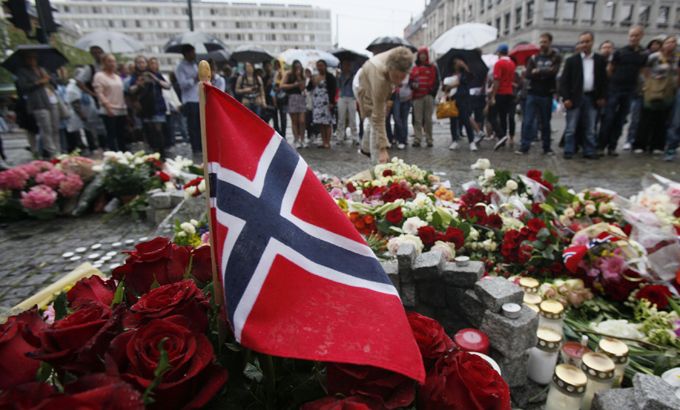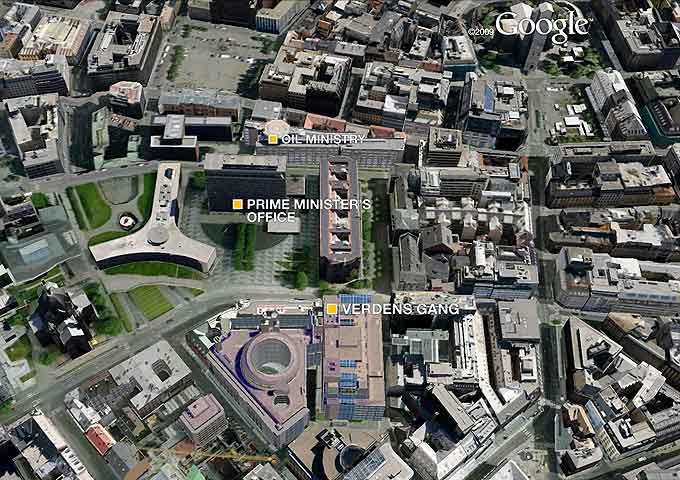Scores killed in twin attacks in Norway
At least 92 people killed when gunman opens fire at youth camp in Utoya island and bomb blast rips through central Oslo.

At least 85 people have been confirmed dead after a shooting at Norway’s Utoya island, nearly two hours after a bomb blast killed seven people in a government district in the capital, Oslo.
Officials announced the death toll on Saturday, a day after a gunman dressed in police uniform opened fire at a youth summer camp in Utoya on Friday.
Oslo police are questioning a 32-year-old Norwegian who was arrested in connection with the shooting incident and bombing, identified by the country’s public broadcaster, NRK, as Anders Behring Breivik.
Police say the suspect had been seen in Oslo before the bombing, which targeted buildings that house the prime minister’s office. Norway’s army is now patrolling the streets of Oslo.
A police official said that information gleaned on the internet suggested the suspect was a “Christian fundamentalist”.
The TV2 television station reported, without disclosing its sources, that the detained man, described as a tall blonde, had ties to right-wing extremism.
The gunman is reported to have been armed with a handgun, an automatic weapon and a shotgun. Breivik bought 6 tonnes of fertiliser in May, a farm supply firm told AFP news agency.
“We sold him six tonnes of fertiliser, which is a relatively standard order,” Oddny Estenstad told the AFP news agency.
Some kinds of agricultural fertiliser have been used in the past to make explosives.
‘A nightmare’
Jens Stoltenberg, the Norwegian prime minister, arrived by helicopter to the island where people were gunned down on Friday and spoke to survivors and some of the victims’ families. The Norwegian king and queen also visited the scene of the shooting.
 |
| Norway’s state television named Anders Breivik as the suspect for the bombing and shooting |
“The whole world is thinking about the victims in Oslo and Utoya,” Stoltenberg said.
In a press conference held in Oslo on Saturday, Stoltenberg said the country had awoken to “a nightmare” and described the shooting in Utoya as “a youth paradise turned into a hell”.
He said: “The police have just started the investigations, and one man is arrested.
“We will wait before we comment on the possible political motives for such attacks. We will do our best to bring those responsible to justice.
“We appreciate the very strong international support we have received. Countries have expressed the will to help with intelligence and how we can exchange information to assist us,” Stoltenberg said.
The prime minister, who was not in his office at the time of the blast, said some members of the government died in the Oslo bomb attack.
People shot in water
Hundreds of young people were attending the summer camp organised by the ruling Labour party in Utoya at the time of the attack.
Al Jazeera’s Harry Smith said that Stoltenberg was due to address the camp attendees on Saturday.
Witnesses described how a man dressed as a police officer opened fire indiscriminately, causing campers to jump into the water and try to escape the bullets.
One 15-year-old witness described how she saw what she thought was a police officer open fire.
“He first shot people on the island. Afterwards he started shooting people in the water,” youth camp delegate Elise told the AP news agency.
Police said undetonated explosives were also found on the island.
‘People screaming’
There was no immediate claim of responsibility for either of the attacks. Anti-terrorism police were deployed to restore order.
|
Al Jazeera’s Imran Khan reports on the attacks on Utoya [Note: Some images may disturb viewers] |
“I saw young people running around, jumping into the water,” Kristine Melby, who lives across the narrow channel on the Norwegian mainland, told Al Jazeera. “We heard people screaming.”
The explosion in the Norwegian capital, which took place at 3:20pm local time, blew out most of the windows of a 17-storey building housing Stoltenberg’s office in the city centre.
It also damaged nearby ministries, including the finance and oil ministry, which was on fire.
Al Jazeera’s Jonah Hull described Oslo as a city “mostly shut down [and] extremely quiet”.
“One gets the sense that it is really vastly changed in character [after the attacks],” he said.
“The bars are closed; the restaurants are closed; not many people are about on what would have been a busy Friday.”
He said there were many unanswered questions “chief among them, of course, why Norway? Why this happened?”
‘Massive damage’
Hanne Taalsen, a journalist working for TV2, told Al Jazeera the blast caused “massive damage in the streets” around the government buildings.
The TV station’s building was later cordoned off amid reports that there was a suspicious package inside.
Newspaper offices in the area were also damaged and smoke could be seen drifting in the streets.
“People are really surprised. I am very surprised. People are shocked that this could happen in Oslo,” Taalsen told Al Jazeera.
“People are quite calm, they are not running around or anything. But people are quite shocked. I think most Norwegians consider themselves to be outside of incidents like this.”
Right-wing groups have generated sporadic attacks in other countries, including the United States. In 1995, 168 people were killed when Timothy McVeigh detonated a truck bomb at a federal building in Oklahoma City.
Speaking to Al Jazeera, PJ Crowley, the former US State Department spokesman, said: “It is possible you could have this kind of global agenda, if you will, but my first instinct is that perhaps this is just one or a small group of people that have a particular grievance against the Norwegian government.”
|
A Google map depicts Oslo’s central district which was devastated by Friday’s bomb blast |
 |